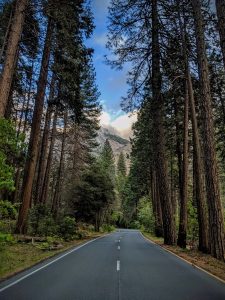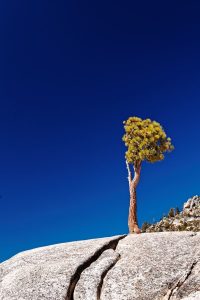Happy Birthday Yosemite!
Visit this October and help celebrate the 132nd birthday of Yosemite National Park!
History of Yosemite National Park
Yosemite National Park is located in central California, straddling the Sierra Nevada mountain range. Many famous explorers and naturalists have passed through this area including John Muir (a strong proponent for protecting the area’s forests), John Wesley Powell (who led the first trip through what would become Grand Canyon), Ferdinand Hayden (who discovered fossilized dinosaur footprints in nearby Lava Creek Gorge) and Clarence Dutton (who was the first non-native person allowed to explore Yosemite).
Where Did it All Start?
Yosemite National Park is one of the most iconic destinations in the United States. From the towering granite peaks to the deep blue groves, this beautiful park is one you’ll never want to leave. It’s hard to imagine that this natural wonderland was once considered a wasteland and nearly destroyed by cattle grazing and water diversion.
But thanks to preservationists like John Muir and Teddy Roosevelt, we have been able to enjoy this amazing place for generations. They were instrumental in establishing Yosemite as our first national park back in 1890! Now there are over 400 national parks spanning all 50 states.
Yet, Yosemite remains one of the most beloved parks in America because it represents the best of what our country has to offer- majestic landscapes, untouched wilderness, and a wealth of geological wonders.
In honor of its birthday, here are a couple of fun facts about this treasured American treasure!
- First protected area in the world: President Lincoln signed an act protecting Yosemite Valley and Mariposa Grove of Giant Sequoias on June 30th 1864, making it the world’s first protected area.
- Number One Attraction in California: As far as attractions go, you can’t beat good ol’ number one! Nearly 4 million people visit every year so if you haven’t made your way out yet, put your hiking boots on and get going!
John Muir’s Inspiration
Muir was a naturalist and founder of the Sierra Club. He was an avid hiker and explorer, and published many articles about his explorations. These explorations took him to what would later become Yosemite National Park. His writings about his time in Yosemite inspired others to explore the area for themselves, thus leading to its eventual protection as a national park.
One key event that occurred in the 1890s was when James Mason Hutchings led an expedition up through Yosemite Valley. There they stumbled upon enormous sequoias, inspiring Hutchings to call them the most colossal living trees on earth. That trip created a demand for more trips into the valley, which led to pressure on Congress to protect it.
Finally, after years of political disputes and lobbying by John Muir and other conservationists, President Abraham Lincoln signed legislation establishing Yosemite Valley as America’s third national park in 1864. John Muir fought throughout his life to save California’s giant sequoia trees from logging until finally Congress set aside land for their protection in 1890.
In 1905, he helped establish Sequoia National Park to safeguard these great treasures. Years later, he worked with President Theodore Roosevelt to help establish Kings Canyon National Park and then again with FDR to help establish Grand Teton National Park in 1929. All three parks are part of the UNESCO World Heritage Site that is now known as the John Muir Trail.
Theodore Roosevelt and the Beginning of the Wilderness Movement
Theodore Roosevelt was one of the major players in the wilderness movement. He had a deep love for nature and advocated for preserving America’s natural beauty. In 1903, President Roosevelt created the United States Forest Service. This agency is tasked with overseeing all national forests as well as grasslands and other public lands. In 1906, he signed an act that set aside over 200 million acres of public land for conservation purposes (including what would become Yosemite).
In 1864, Congress established Yellowstone National Park in Wyoming as America’s first national park—nearly 70 years before Theodore Roosevelt was president. However, it was only after Roosevelt took office that people began to talk about how to keep parks pristine because they are unique places where humans can experience solitude, peace and quiet while surrounded by nature.
While there have been many attempts to protect America’s remaining wildernesses since then, most were thwarted by mining interests or logging operations. It wasn’t until 1960 when John F Kennedy signed an act that protected the Arctic National Wildlife Refuge from oil drilling that large areas of unprotected American land were finally given protection from development.
Today, the Wilderness Act protects nearly 110 million acres of U.S. federal land from human activity so that these areas remain unimpaired by man-made structures and activities.
How Yosemite is Managed Today
In the more than 150 years since it was created, no one has ever succeeded in making money at managing Yosemite. That’s not to say that it hasn’t been managed. Quite the contrary, in fact; the park service does spend about $14 million a year on management and operations. But it costs about $80 million to run for one year, so those other functions—roads and campgrounds, for example—are paid for with entrance fees, concessions revenue, and donations.
Even as they’ve grown steadily over the last few decades, all three sources have struggled to keep up with the pace of inflation and increasing visitor numbers. However, there are signs this is starting to change thanks to some innovative partnerships between private companies and the government.
One such partnership involves Xanterra Parks & Resorts, who manages hotels and lodges inside the park including Curry Village, The Majestic Yosemite Hotel, The Ahwahnee Hotel, Wawona Hotel, and Glacier Point Ski Hut. They also operate several restaurants like the Yosemite Valley Half Dome Village Snack Bar or Half Dome Village Food Court near Curry Village.
Xanterra even takes care of what most people would consider mundane tasks such as shuttle buses or recycling facilities. These partnerships allow for much-needed private funding to be injected into Yosemite’s budget without compromising its status as a national park operated by the federal government.
Did You Know These Facts About Yosemite?
-
In 1851, California became the 31st state in the United States.
- John Muir was an early advocate for the preservation of what is now known as Yosemite National Park and was one of the first to articulate a vision for the national park idea and helped to establish it in his writings and advocacy.
- In 1864, President Abraham Lincoln signed legislation that ceded Mariposa Grove and Yosemite Valley to California as a state park which was called Yosemite Valley and Mariposa Grove State Park until 1906 when it became Yosemite National Park.
- In 1916, Ulysses S. Grant Camp (formerly Camp Curry) opened at the base of Glacier Point in Yosemite Valley. It served as headquarters for campers from San Francisco and Los Angeles who drove up Tioga Road through heavy winter snows to enjoy a summer vacation by horseback riding or hiking in the valley and climbing snow-covered peaks.
-
On July 24th, 1945, Yosemite National Park was dedicated with President Harry Truman as guest speaker at ceremonies held at Crane Flat Meadow just below Tuolumne Meadows Lodge with an audience of 10,000 people including John Muir’s daughter Helen who came all the way from Martinez just to hear her father’s dream become reality!
- There are over 600 species of wildlife living within the confines of Yosemite National Park – more than any other single place on earth!
- Animals native to this region include black bears, gray foxes, deer, elk, bobcats and cougars among others.
- From 1920 to 1923, both artist Albert Bierstadt and photographer Carleton Watkins produced panoramic prints of the famous Half Dome and El Capitan formations. They were printed in two rows with text accompanying them.
- One such print was titled Yosemite Valley and depicted towering granite cliffs overlooking lush meadows filled with grazing cattle while another print El Capitan showed a massive monolith rising thousands of feet above the valley floor. These prints were shown internationally and had great impact on promoting Yosemite as a tourist destination.
- Yosemite Falls, at 740 ft. high, is believed to be the tallest waterfall in North America and is most spectacular during spring runoff due to heavy snowmelt combined with rain showers.
-
Yosemite Falls has been featured on many postcards over the years depicting beautiful waterfalls cascading down granite cliffs amid pristine forests and wildflowers lining its banks providing an idyllic landscape.
- In 1997, Yosemite National Park was designated as a World Heritage Site and became the third American National Park to receive this designation.
- Yosemite National Park is home to over 90% of the world’s population of California Black Bears and offers the rare opportunity to view these animals in their natural habitat.
- In 2008, President George Bush signed a bill into law declaring the Giant Sequoia Tree a living symbol of our nation’s conservation ethic and granted it protection under the provisions of the Wild Free-Roaming Horse and Burro Act of 1971.
- And in 2011, President Barack Obama created three new units: Mariposa Grove, Wawona and Honoha Bay adding approximately 2,500 acres to Yosemite National Park.
Check out this awesome documentary about Yosemite!

















